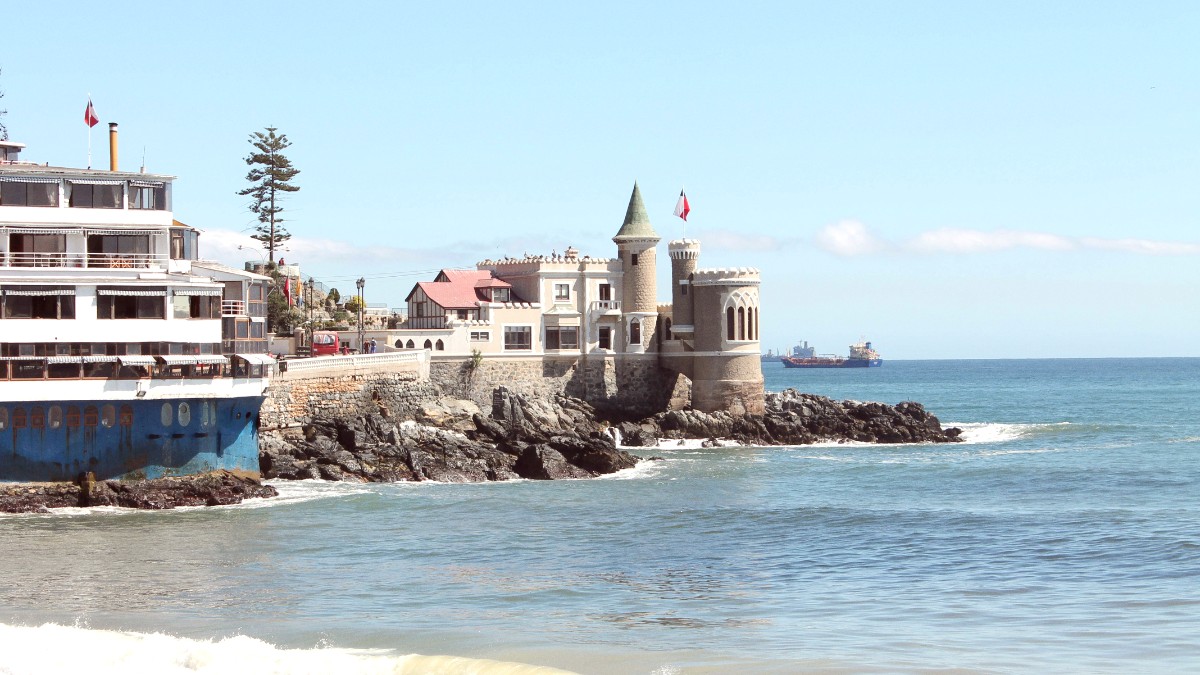
Chile
Summer (December-February) brings warm, dry weather, with temperatures typically 17-25°C (63-77°F). Humidity levels are low. This period is suitable for beach activities.
Winter (June-August) is mild and wet, with temperatures generally 8-15°C (46-59°F). Rainfall is frequent. Spring (September-November) and Autumn (March-May) offer pleasant transitions.
Viña del Mar generally avoids extreme weather. However, dense coastal fog, "camanchaca," can occur.
This fog appears, especially during cooler months (winter and spring mornings), sometimes reducing visibility. It typically burns off by midday, revealing clear skies.
December to February
Warmest weather, perfect for beach activities. All attractions operate at full capacity.
Higher accommodation and flight prices. City becomes crowded. Book well in advance.
September-November & March-April
Pleasant temperatures for sightseeing. Fewer crowds. Lower prices.
Ocean water might be too cool for swimming. Some seasonal businesses have reduced hours.
May to August
Significantly lower prices for flights and lodging. Fewer tourists, authentic local experience.
Cooler and wetter weather. Beach activities less appealing. Some attractions have limited hours.
January and February are optimal for beach and water sports. These months have the warmest water temperatures.
Choose October-November (late spring) or March-April (early autumn). These shoulder seasons offer comfortable temperatures for walking and city exploration.
Plan your trip for February if attending the famous Song Festival.
Experienced surfers find the best waves during the winter months (June-August).
Wetsuits are necessary for comfort in the ocean year-round.
Book accommodations and tickets far in advance for popular events.
January and February are peak summer, ideal for swimming and sunbathing.
Before traveling to Viña del Mar, grasp the visa and entry requirements for Chile. These regulations vary by nationality.
Citizens from the United States, Canada, Australia, European Union (Schengen Area), and United Kingdom generally do not need a visa for tourism stays up to 90 days.
Your passport must be valid for at least six months beyond your planned date of departure from Chile.
Plan your budget for Viña del Mar by understanding the local currency, typical prices for various services, and smart money-saving strategies.
Prioritize your health and safety. Inform yourself about recommended vaccinations, common health concerns, emergency services, and general safety practices.
No specific vaccinations are required for entry into Chile for tourism.
Consult a healthcare provider 4-6 weeks before your trip for routine and travel-specific advice (e.g., Hepatitis A, Typhoid).
An annual flu shot is a wise precaution.
Traveler's Diarrhea
Drink bottled or purified water. Avoid tap water. Choose well-cooked food. Practice diligent hand hygiene.
Sunburn is a concern due to high UV index. Use high-SPF sunscreen, wear a wide-brimmed hat, and sunglasses with UV protection. Seek shade during peak sun hours.
Altitude sickness is not a concern in Viña del Mar, as it is at sea level.
Viña del Mar has hospitals and clinics. Private clinics generally offer a higher standard of care.
Pharmacies (farmacias) are widely available. Large chains like Cruz Verde, Salcobrand, and Ahumada are common.
Police (Carabineros de Chile): 133. Ambulance (SAMU): 131. Fire Department (Bomberos): 132.
Viña del Mar is generally safer than Valparaíso. Petty crime is a concern. Common crimes are pickpocketing, bag snatching, and credit card fraud.
Chile sits in a seismically active zone. Earthquakes are common. Buildings are constructed to rigorous seismic standards.
Familiarize yourself with Drop, Cover, and Hold On procedures.
Coastal city risk. Tsunami evacuation routes are clearly marked. Move to higher ground during alerts.
During dry summer months (Dec-Feb), wildfires occur. Stay informed about warnings.